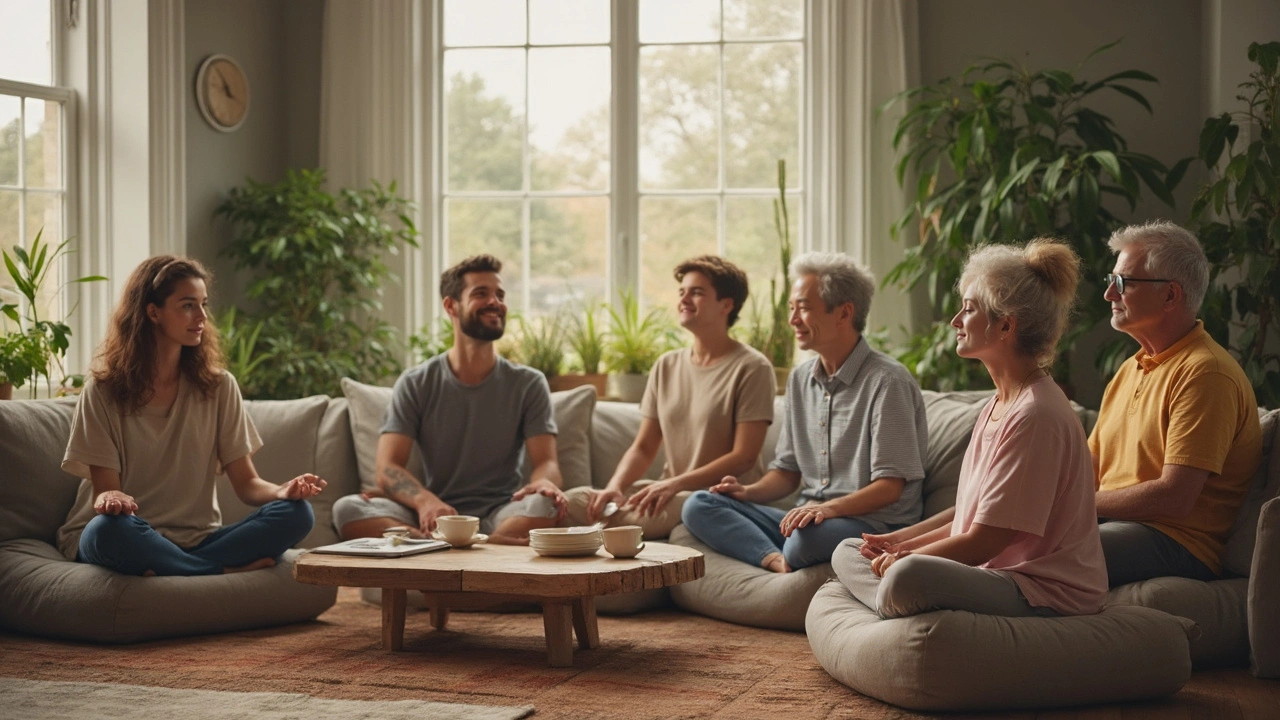Mindfulness: Simple Practices for You and Your Dog
A five-minute mindful pause can cut stress and help you notice your dog's signals faster. Mindfulness is just paying steady attention to the present—your breath, your body, and what’s happening around you. Used regularly, it lowers tension, sharpens focus, and makes routine care—grooming, walking, or massage—more effective and calmer for both of you.
Quick practices you can start today
Breath check: Sit or stand with your dog nearby. Breathe in for four counts, out for six. Repeat five times. That extra exhale calms your nervous system and slows your pace so your dog feels safer.
Two-minute body scan: Put one hand on your chest and one on your belly. Notice areas of tightness for just a minute or two. When you relax, your dog often relaxes too. Use this before handling paws, ears, or during a vet visit to lower stress responses.
Mindful petting: Instead of scrolling, spend three minutes stroking your dog slowly. Focus only on the texture of fur, their breathing, and the small movements of their body. Try long, even strokes along the back and sides. This turns petting into a mini-massage that soothes both of you.
Mindful walk: Drop the headset. Walk at a steady, unhurried pace and match your breathing to steps—one breath every four steps. Notice smells, sounds, and how your dog explores. When you walk calmly, your dog tests and mirrors your energy less, making training and recall easier.
Use mindfulness to improve care and training
Before grooming or a training session, take a minute to breathe and ground yourself. That one-minute reset reduces your urge to rush and lowers the chance your dog tenses up. During training, reward calm behavior immediately—calm is contagious and easier to reinforce than frantic activity.
Combine mindfulness with massage: Short, focused massage combined with slow breathing helps muscle relaxation and can speed recovery after exercise. Use gentle circles along the shoulders and hips, watch your dog's face and breathing for signs of comfort, and stop if they pull away or show stress.
Use tech wisely: A simple biofeedback app or a heart-rate monitor can show you how your breathing affects your stress level. Try a 5-minute session and watch the numbers drop as you slow your breath. Seeing progress keeps you consistent.
Make it a habit by attaching mindfulness to an existing routine—before meals, right after your walk, or during bedtime petting. Start small: five minutes a day beats a perfect hour once in a while. Over weeks you’ll notice you react less to chaos, your dog feels safer, and small health checks become easier.
If you want specific routines for anxiety, vet visits, or athletic recovery, check related posts on this tag for step-by-step guides, massage techniques, and short programs you can try today.

Mindfulness and Leadership: How Being Present Makes You a Better Leader
Mindfulness transforms leadership by building emotional intelligence, improving decision-making, and creating psychological safety. Leaders who practice presence see clearer, respond better, and build stronger teams.

How Mindfulness Helps Reduce Anxiety in Everyday Life
Mindfulness helps reduce anxiety by training your brain to stay present instead of spiraling into worry. Simple practices like mindful breathing and body scans can lower stress hormones and improve emotional control over time.

Calmness Benefits in a Hyperactive Society
Explore why calmness is essential today, its health and productivity benefits, and simple habits to bring tranquility into a fast‑paced world.

Calmness Techniques for Stress Relief: Skills for a Balanced Life
Explore the science of calmness and practical tools for real-life stress. Learn how to use calm techniques for clearer thinking and a healthier lifestyle.

How to Start Meditating: The Ultimate Beginner’s Guide for Calmer, Happier Living
Ready to find some peace? This beginner’s guide covers exactly how to start meditating, plus practical tips, easy methods, and useful facts for real-life mindfulness.

Mindfulness Techniques to Ease Health Anxiety: Practical Steps for Everyday Calm
Explore practical mindfulness tools that help manage health anxiety, including science-backed facts, easy tips, and real-life insights to encourage everyday calm.

Relaxation Techniques: The Secret to Better Mental Performance
This article uncovers how relaxation techniques can sharpen your mental edge. It digs into simple, science-backed methods for stress relief that anyone can use. You'll find out what actually happens in your brain when you dial down stress and how that impacts focus and memory. Practical tips and unexpected facts show how even small routine changes can make you sharper and calmer. This is your shortcut to boosting brainpower without burning out.

Meditation and Mindfulness: How They're Linked and Why It Matters
This article dives into how meditation and mindfulness connect, breaking down what sets them apart and where they overlap. Get clear, practical advice on starting a meditation practice and how it can boost mindfulness in everyday life. Find out what happens in your brain when you meditate and why tiny moments of awareness can reset your mood. Packed with tips and real-life examples, this guide shows you how to keep both meditation and mindfulness simple, realistic, and actually helpful. Anyone looking to stress less or focus more will find useful ideas here.

Calmness Techniques: Practical Ways to Improve Emotional Health
This article explores hands-on ways to use calmness for better emotional health, breaking down techniques anyone can try. Learn how small changes in daily routines can make a big difference in how you handle stress. You'll get easy steps to build lasting calm, plus some interesting facts on how your brain reacts to simple habits. Discover how to tell when your stress is out of control and when it's time to get help. This guide gives real tips you can use every day to keep anxiety in check.

Unlock Your Potential: Stress Reduction for Success
Stress can be a major roadblock to achieving personal and professional success. By understanding stress and adopting practical strategies to manage it, one can unlock hidden potential and improve overall well-being. This article offers insights into the impact of stress on productivity and provides actionable tips that can be easily integrated into daily routines. Learn how mindfulness, exercise, and time management can turn stress from an obstacle into a stepping stone for success.

Amma Massage: A Journey to Inner Peace
Oct, 24 2023

Fire Massage: A Burning Trend in Alternative Therapy
Sep, 12 2023

Meditation and Yoga: The Perfect Wellness Combo
Aug, 8 2023

